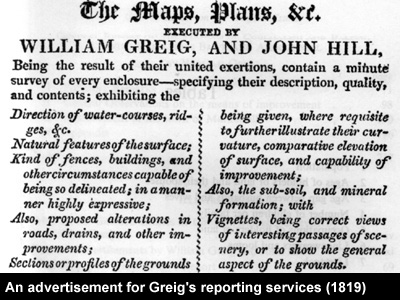
Successive good harvests and an increasing volume of trade allowed Gosford Land Agent William Blacker to introduce new methods of agricultural production in the mid-nineteenth century. He had boundaries between lands straightened and provided seeds for planting under the direction of a team of agriculturists. He also encouraged the practice of feeding animals indoors thus freeing up valuable land for the production of larger crops. The construction of a markethouse provided a place to store the harvest until it was sold. In time, these practices were accepted by the tenants and subsequently introduced on other estates.
The management of large estates such as Gosford required, also, good maps. William Greig's survey and report of the Estate in 1821 was an invaluable tool at the time. Today, Greig's report remains just as valuable as an historical record.
Increasing organisation in the agricultural realm was part of the key in avoiding the scourge of the Great Famine. Unlike other areas in Ireland the tenants in County Armagh had for some time been involved in the diversification of crops and were therefore less dependent upon the potato as a source of food. That is not to say this area escaped the famine or the disease that followed but almost certainly its effect was lessened.
